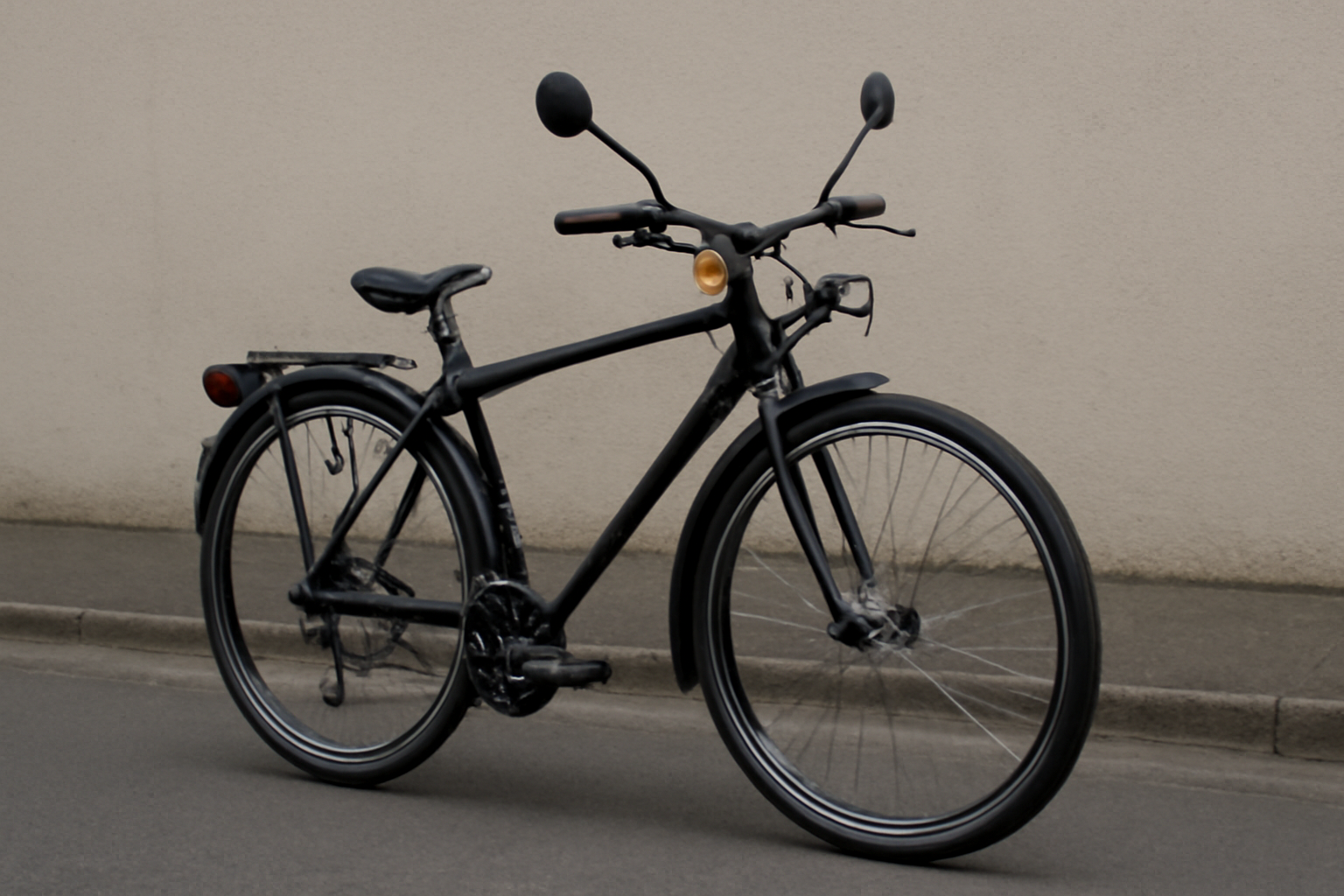Learning how to make a dirt bike road legal involves some basic changes to get your bike roadworthy and up to local road codes. Start by attaching essential accessories such as turn signals, headlights, brake lights, and a horn.
Next, replace the off-road tires with street-legal tires and improve the exhaust system to meet noise and emissions standards.
Additionally, you’ll need to ensure the bike passes local inspections and complete the required paperwork for registration. With these modifications and proper documentation, you’ll be able to enjoy riding your dirt bike legally on both trails and paved roads.
2. Key Modifications Needed for Road Legal Dirt Bikes
To transform your dirt bike into a road-ready machine, you’ll need to make several key modifications to ensure compliance with road laws and safety standards. The necessary changes often include installing essential components such as lights, mirrors, a horn, and more. These modifications not only make your dirt bike street legal but also ensure your safety while riding on public roads.
Below are some of the primary upgrades you’ll need to consider to meet legal requirements and make your dirt bike suitable for both off-road and road use.
2.1 Adding Turn Signals and Brake Lights
Installation of operational turn indicators and brake lights is a crucial adjustment to ensure safety and compliance with road law. Turn indicators are crucial as a warning to other drivers of your intention, while brake lights warn people behind you in case you are decelerating or stopping.
Having these parts in most regions is required to legally ride on the road. Without them, you might be pulled over by the police and even be required to pay fines. Mount the signals in such a way that they are visible from both the sides and the rear, and the brake lights must at least comply with brightness standards of your local laws.
2.2 Headlight and Tail Light Installation
The headlight and tail light should be operational in order to be able to ride in low-visibility and nighttime conditions, so they should be roadworthy. The headlight is needed to illuminate the road and allow you to see at night, while the tail light is needed in order to be seen, especially when riding through traffic. Both lights must be of the specified brightness, and the headlight adjustable to avoid blinding other road users.
Ensure that the lights are firmly mounted and wired into the electrical bike system so that they work reliably.
2.3 Installing a License Plate Holder and Reflectors
Every road-legal bike requires a license plate holder and reflectors for visibility and registration purposes. The license plate holder is required for attaching your bike’s license plate, which is needed for identification and legal traveling on public roads.
Reflectors are necessary for making your bike more visible to other motorists, especially in low-light or nighttime travel. They ought to be mounted on the back of the bike and perhaps on the sides to achieve maximum visibility. Reflectors come in a range of colors, but red reflectors are generally required on road bikes.
2.4 Plugging in a Functional Horn
An operational horn is legally required to afford your method of communication with other drivers, especially in times of emergency.
Whether you’re trying to alert someone of your presence or signal others of a potential threat, a horn is an important safety mechanism. Even though dirt bikes rarely come equipped with horns, adding one as a straightforward solution is an essential safety feature to your bike.
Ensure that the horn is loud enough to be heard by other individuals, and that it is well mounted and within easy reach for the rider to function when needed.
3. Providing Proper Tires for Road Use
Off-road tires are what dirt bike tires are composed of, so replacing them with tires that can be used on the road is a roadworthiness and safety requirement. Road tires are designed to provide more traction on asphalt, necessary for safe use at higher speeds. These tires are usually made of rubber compounds that provide maximum traction on asphalt and prevent slipping or losing control of the bike.
Make sure to select tires that are specifically designed for road use and ensure that they comply with the legal standards for tread depth and overall road safety in your region.
4. Reshaping the Exhaust System for Road Compliance
Most states have laws requiring dirt bikes to be fitted with exhaust systems that comply with noise and emission requirements, so reshaping your exhaust system is usually a requirement. Stock dirt bike exhausts are designed for off-road racing and may be too loud to use on the street. A street-legal exhaust will be quieter than factory off-road pipes and compliant with local noise regulations.
It might also have to be compliant with emissions levels established by the Environmental Protection Agency (EPA) or local government. Your exhaust system can be upgraded to increase your bike’s performance and bring it into road law compliance.
5. Ensuring the Bike Meets Local Emissions and Noise Regulations
Depending on your location, your dirt bike will need to pass emissions and noise tests to be considered road legal. Emission standards ensure that your bike doesn’t emit pollutants that could harm the environment, while noise regulations limit how loud the bike can be to prevent noise pollution. These requirements vary by state and country, so it’s crucial to check local regulations before modifying your bike.
Many regions have strict testing procedures, which may include passing an emissions inspection and noise level test before your dirt bike can be registered for road use.
6. Completing the Paperwork for Road Legality
Along with physical modifications, you’ll need to complete necessary paperwork to register your dirt bike and obtain license plates. This process generally involves showing that your bike is road-legal and safe under local road legislation. You’ll need to provide proof of ownership, take an inspection, and in some cases, show receipts for any work that’s been done on your bike.
Registration varies from state to state, so be sure to get in touch with your local DMV or equivalent office to get the necessary forms and fees. Once all paperwork is filed, you’ll be issued a license plate and can legally ride your bike on the road.
6.1 Registering the Bike with the DMV
In most regions, registering your dirt bike with the Department of Motor Vehicles (DMV) is required to make it road legal. During this process, you’ll need to present your modified bike for inspection, submit paperwork, and pay any applicable fees. The DMV will check that your bike meets safety, emissions, and other legal standards before issuing a registration and license plate.
If you’ve made significant modifications, such as adding lights or changing the exhaust, be prepared to provide proof of these changes. Successfully completing registration ensures that your bike is legally recognized as roadworthy.
6.2 Inspections and Certifications
Some areas may require a roadworthiness test to ensure that your dirt bike is safe according to standards before it can be legalized on the road. These tests would typically involve a detailed checkup of your bike’s modifications, including its lights, tires, brakes, exhaust, and emissions components.
Some areas may also require certification to prove that your bike’s modifications are in line with all legal requirements. Passing an inspection is crucial for obtaining a registration and license plate, and it guarantees that your bike is safe for road use.
7. Additional Considerations for Insurance and Legal Riding
Once your dirt bike is road legal, it’s important to also consider insurance options and legal responsibilities when riding it on public roads. In many areas, you’ll need motorcycle insurance to cover damages or accidents while riding on the street. Insurance can also be extended to third-party liability, as is legally required.
Be sure to also become accustomed to traffic codes and regulations in your area to permit safe and legal riding. Some places may also require certain equipment, like helmets, to be worn when riding on the road, so be sure to check local laws.
FAQ’s
1. What do I need to do to make my dirt bike road legal?
You must install turn signals, headlights, taillights, a horn, mirrors, and a license plate holder in order for your dirt bike to be allowed on public road. You may also need to replace the tires and exhaust system.
2. Can I make any dirt bike?
For the most part, you can make most dirt bikes road legal by adding the required parts to them. Some models may have limitations depending on state or national laws.
3. How do I register my modified dirt bike?
After you have completed all the necessary modifications, you must take your dirt bike to the DMV or other registering authority to obtain a title, register the bike, and get a license plate.
4. Is an inspection required for a road legal dirt bike?
Yes, most jurisdictions call for a safety inspection to ensure that your converted dirt bike will meet all roadworthiness standards. This may include examination of brakes, lights, and exhaust.
5. How much does it cost to make a dirt bike road legal?
The cost varies on what needs to be done in terms of modifications. Parts and registration costs typically range from $500 to $1500.
6. Are dirt bikes street legal in all states?
No, dirt bike road legality varies by state or country. It’s always best to check with local legislation to determine whether your dirt bike is road legal in your area.
7. Can I ride my dirt bike on the highway after I make it road legal?
While you may be permitted to operate your dirt bike on certain roads, highway travel may be restricted based on the engine size, speed of the bike, and your state’s laws.
8. Will my insurance cover my dirt bike once it’s road legal?
Yes, once your dirt bike has become road legal, you will need to carry motorcycle insurance that includes coverage for street riding. Some insurance companies offer specialized coverage for modified motorcycles.
9. How do I make my dirt bike street legal in California?
To legalize a dirt bike for the street in California, it must meet strict emissions standards and pass a CHP inspection in order to be considered road legal. Some additional features that are required include a mirror, headlight, taillight, and a working horn.
Conclusion
Making your dirt bike road legal may require some effort and investment, but it’s well worth it for those riders who want to have the experience of riding on trails and roads. By making the necessary modifications, ensuring compliance with local laws, and completing the required paperwork, you’ll be able to legally take your dirt bike on the road.
Whether you’re commuting, running errands, or exploring new areas, a road-legal dirt bike offers endless possibilities for adventure and freedom. Take the time to get your bike street-ready, and enjoy the best of both worlds!

I am Ryan Ford, a mountain biking enthusiast who loves to explore the outdoors. I also like to go on adventures with friends and anything else that involves being outside. I love my bike because it gets me out of the house and gives me an opportunity to enjoy nature.

